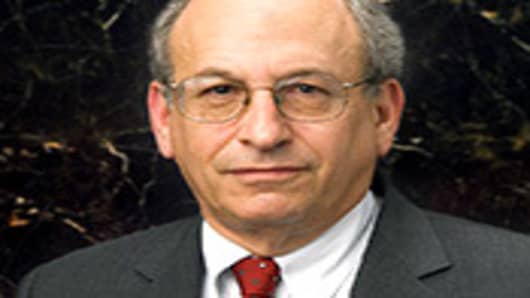The Federal Reserve's No. 2 official signaled a willingness to cut interest rates further, saying renewed financial market turmoil could slow the U.S. economy more abruptly than earlier thought.
"Uncertainties about the economic outlook are unusually high right now," Fed Vice Chairman Donald Kohn said in a speechto the Council on Foreign Relations. "These uncertainties require flexible and pragmatic policy-making -- nimble is the adjective I used a few weeks ago."
Credit markets, which had settled some after extreme jitters set in in August, began to deteriorate anew in recent weeks as a number of major U.S. banks announced they will write-down billions of dollars worth of assets due to exposure to souring mortgages and other debt.
"The increased turbulence of recent weeks partly reversed some of the improvement in market functioning over the late part of September and October," Kohn said. "Should the elevated
turbulence persist, it would increase the possibility of further tightening in financial conditions for households and businesses."
Kohn's remarks stood in sharp contrast to recent comments by Philadelphia Federal Reserve Bank President Charles Plosser, Chicago Fed President Charles Evans and Fed Governor Randall
Kroszner, who had suggested as recently as Tuesday that the two rate cuts made since mid-September would be enough to buffer the economy from the housing slump and related market turmoil.
However, as vice chairman, Kohn's acknowledgment that further easing by the Fed's policy-setting Federal Open Market Committee may be necessary carries outsize weight, and the
comments helped cheer stock investors.
"It sounded nothing like anything we've heard since the last meeting from other FOMC members," said Laurence Meyer, a former Fed governor who introduced Kohn at the event. "It's not a surprise because the only FOMC members that can change the message are the vice chairman and the chairman."
The Fed cut benchmark overnight lending rates by a half-percentage point on Sept. 18 and by a further quarter-point on Oct. 31, bringing them to 4.5 percent. It next meets on Dec. 11.
Kroszner said on Nov. 16 the Fed's current monetary policy stance should be sufficient to get the economy through an anticipated "rough patch" extending into next year. Evans and Plosser delivered a similar message Tuesday.
In his remarks Wednesday, Kohn said he had expected tight credit conditions to exert some restraint on demand when he weighed interest rate cuts in September and October.
But the Fed vice chair said the recent drying up of liquidity as banks hoard cash as a contingency against credit-related losses had caught him off guard and is cause for
heightened concern among policy-makers.
"I have to admit that, speaking for myself ... the degree of deterioration that has happened over the last couple of weeks was not something that I personally anticipated," he said
in response to questions after his speech.
"Financial institutions became more cautious, and I think this process is one that we are going to have to take a look at when we meet in a couple of weeks," he added.
Kohn's openness to more rate cuts brings Fed thinking more into line with the expectations of financial markets, which widely anticipate a rate reduction in December and are leaning
toward more cuts next year.
"The policy debate between easing and not easing at the Dec. 11 FOMC meeting will likely be animated, but Kohn's speech today suggest the crucial center of the committee is moving
toward a (quarter-percentage point) ease," said Michael Feroli, an economist with JPMorgan Economics in New York.
On the economy, Kohn said the relative strength of the labor market was providing an "important pillar" for the economy" but spending data has been a bit soft.
The vice chairman also said the housing sector continued to erode at a "very, very rapid pace" and he saw no signs of the market bottoming out.
Data on Wednesday showed U.S. existing home sales fell 1.2 percent in October to a record low 4.97 million-unit pace, while home prices declined and inventories rose.


